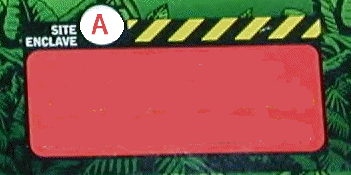
From the Dinosaur Collector:
North America in the Ice Age
update 091208
Before the Ice age extinction North America was home to fauna as varied as today's African savannah.
Age of Mammals Diorama More Diorama and pages
Modern man had a long relationship with the mammoth. In North America the tundra was the home of the Woolly Mammoth, Mammuthus primogenus. In Eurasia its close relative the Steppe Mammoth held sway.
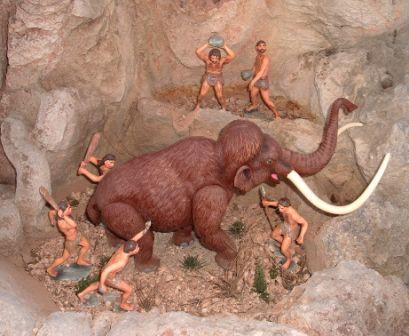
Marx Cavemen PHOTO AND ART WORK BY....Fred R Hinojosa.
The American Lion Panthera leo atrox was other top predator. It is not clear if it was actually a lion or tiger. American Lion. Panthera atrox. Closely related to the modern African lion, the American lion was the largest member of the cat family found in the asphalt deposits. AMERICAN LION (panthera leo atrox) This extinct lion was found in throughout North America as well as northern South America. The most well-preserved fossils were found out of the Rancho La Brea tar pits (over 80 individuals) in Los Angeles and in Alaska, Yukon
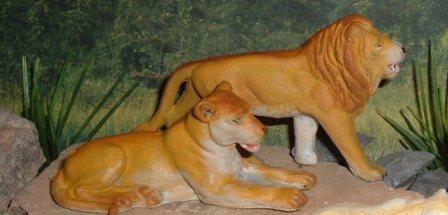
PHOTO AND ART WORK BY....Fred R Hinojosa.
The Woolly Mammoth was not a particularly large member of the elephant family. The rapid disappearance in North America of the mammoth coincides with the rapid spread of the Clovis culture that developed specialized hunting techniques for big game.
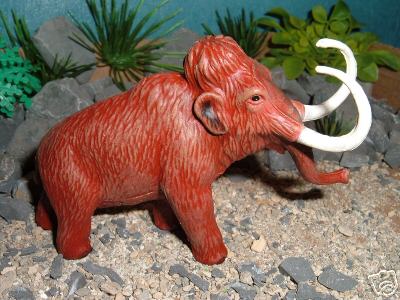
Recast Marx Mammoth PHOTO AND ART WORK BY....Fred R Hinojosa.
The stag-moose or elk (scientific name Cervalces scotti) is an extinct deer slightly larger than the modern moose. Its name, stag-moose, refers to the fact that it looks much like a cross between an elk and a moose. The stag-moose is found in deposits that indicate it probably preferred mires and other wetlands environments such as spruce parklands. This habitat is similar to that preferred by modern moose. The stag-moose probably led a lifestyle very similar to that of the modern moose.
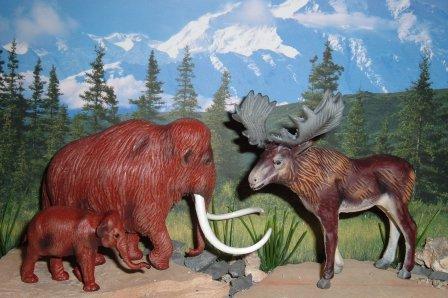
Invicta Mammoth PHOTO AND ART WORK BY....Fred R Hinojosa.
Mammoths are thought to have social groups like modern elephants. The groups of 3 - 4 related females with their calves living together. The males being solitary or in bachelor male groups.
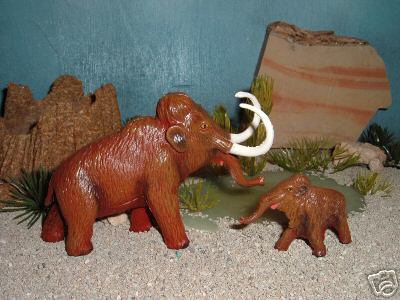
PHOTO AND ART WORK BY....Fred R Hinojosa.
American Mastodon (Mammut americanum) was a large, elephant-like herbivore. It ranged in height from approximately 7 feet (2.1 meters) in females, to nearly 10 feet (3 meters) in males; an adult mastodon could weigh as much as 6 tons (5400 kilograms). Its head was equipped with a flexible trunk, small ears, and tusks. The tusks grew straight forward, nearly parallel to one another, and curved slightly upward. Unlike modern elephants and extinct mammoths, the mastodon had cuspate molar teeth which have crowns consisting of distinct rounded cusps. This indicates they had a different feeding strategy browsing rather than being grass eaters.
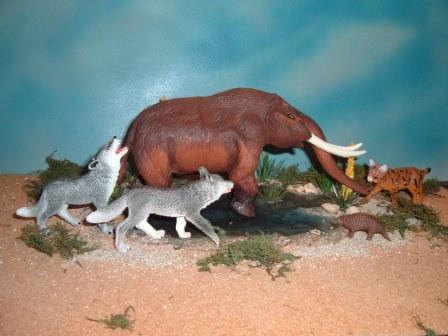
Custom painted Imperial Mastodon PHOTO AND ART WORK BY....Fred R Hinojosa.
Caribou survived the change at the end of the Ice Age when the dry grassland were replaced with the modern swampy taiga. They are ruminants, having a four-chambered stomach. They mainly eat lichens in winter, especially reindeer moss. However, they also eat the leaves of willows and birches, as well as sedges and grasses.

PHOTO AND ART WORK BY....Fred R Hinojosa.
There were two bison in the North America the ancestor of the modern American buffalo the Steppe Wisent Bison priscus and the giant long horned Bison antiquus. Bison were herded into large chutes made of rocks and willow branches and then stampeded over cliffs.
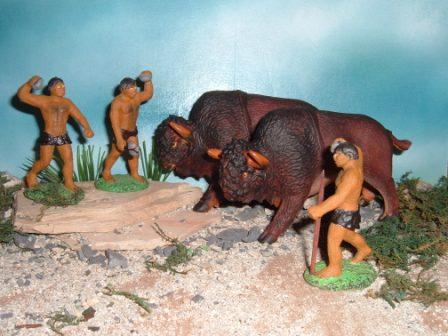
PHOTO AND ART WORK BY....Fred R Hinojosa.
The American Bison is a relative newcomer to North America, having originated in Eurasia and migrated over the Bering Strait. About 10,000 years ago it replaced the Long-horned Bison (Bison priscus), a previous immigrant that was much larger. It is thought that the Long-horned Bison may have gone extinct due to a changing ecosystem and hunting pressure following the development of the Clovis point and related technology, and improved hunting skills. During this same period, other megafauna vanished, to be replaced to some degree by immigrant Eurasian animals that were better adapted to predatory humans. The American Bison, technically a dwarf form, was one of these animals.
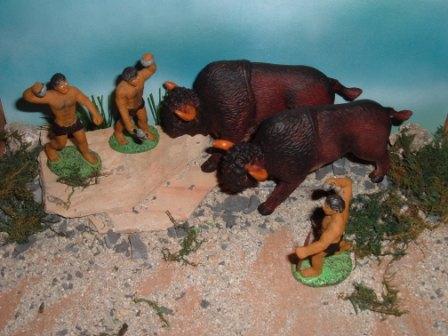
PHOTO AND ART WORK BY....Fred R Hinojosa.
The Ancient Bison was taller, and had larger bones and horns and generally 15-25% larger than modern day bison. From tip to tip, the horns of the Bison antiquus measured approximately 3 feet.
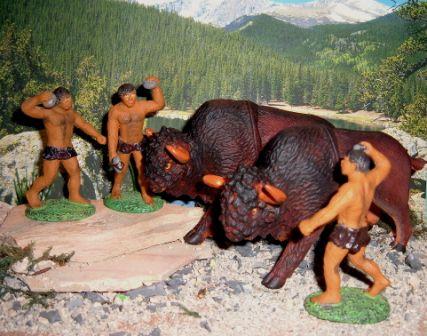
PHOTO AND ART WORK BY....Fred R Hinojosa.
Return to Cenozoic Menu
Site A icon to the right for Dioramas organized by period or by manufacturer.